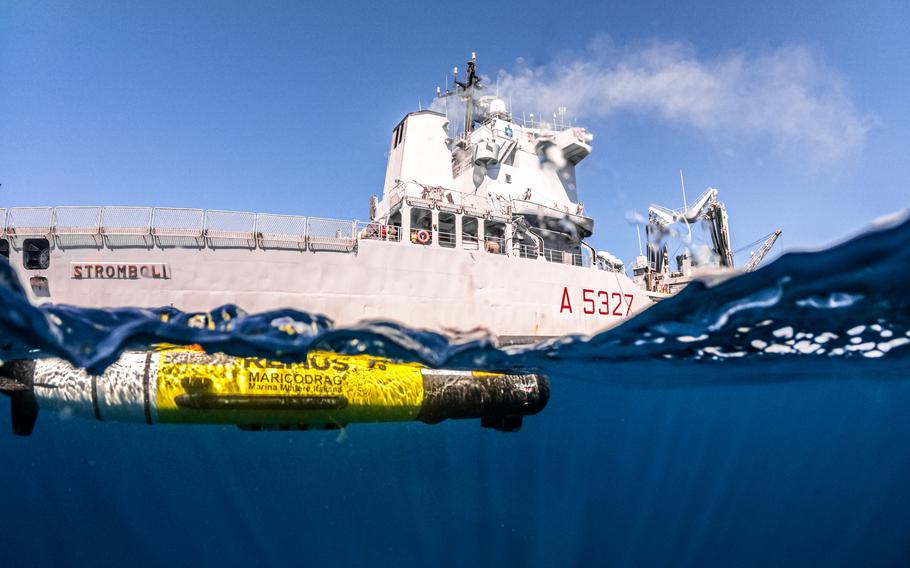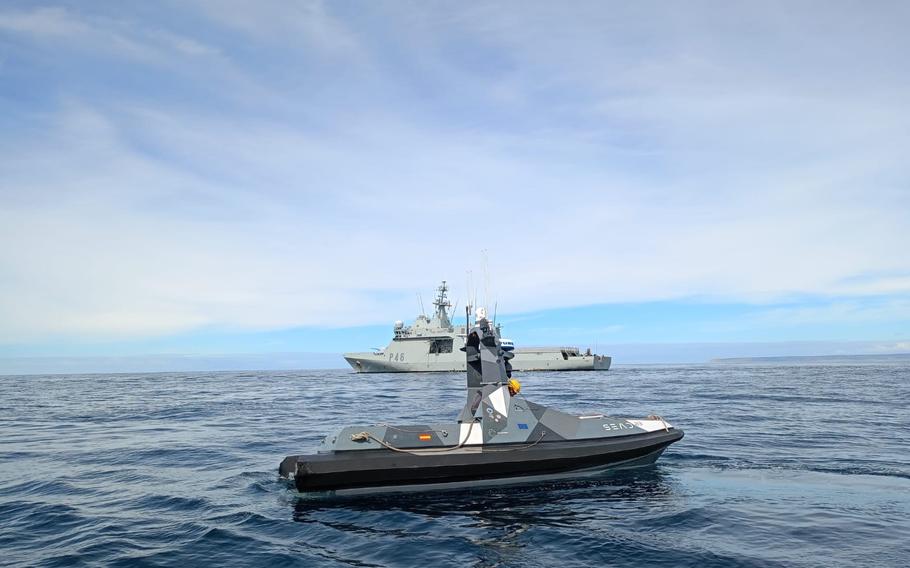
During exercise Dynamic Messenger, which wrapped up last week, NATO country navies tested a range of unmanned vehicles. The drill was part of an effort to enhance protection of critical underwater infrastructure. (Twitter/NATO Maritime Command)
Unmanned underwater vehicles that were used in recent experimentation with an array of new tactics could transform how NATO allies defend critical infrastructure from attack.
Dynamic Messenger, which was held off the coast of Portugal and concluded last week, was the first NATO exercise to have a specific focus on protecting critical undersea infrastructure, the alliance’s Maritime Command said in a statement Wednesday.
For NATO, defending infrastructure such as gas pipelines has become a high priority in light of the sabotage last year of Nord Stream 1, a Baltic Sea pipeline that previously delivered natural gas from Russia to Germany.
Russia shut off the flow of gas through Nord Stream 1 in retaliation for sanctions imposed by the West over Kremlin forces’ invasion of Ukraine in February 2022.

NATO's exercise Dynamic Messenger involved testing of unmanned undersea vehicles. The drill, which took place off the coast of Portugal and ended last week, is expected to help alliance members fine-tune their approach to protecting critical undersea infrastructure. (Twitter/NATO Maritime Command)
The statement did not say which countries participated in the exercise or how many service members were involved.
Allies also have raised alarms about Russia’s ability to target undersea cables that are responsible for transmitting internet traffic around the world and carry trillions of dollars in financial transactions on a daily basis.
“There are heightened concerns that Russia may target undersea cables and other critical infrastructure in an effort to disrupt Western life, to gain leverage against those nations that are providing security to Ukraine,” NATO’s intelligence chief, David Cattler, told reporters in May.
To address those concerns, NATO agreed during a July summit in Vilnius, Lithuania, to form a security center for critical undersea infrastructure, of CUI, within its Maritime Command.
The Dynamic Messenger drills used autonomous underwater vehicles, which “allow for longer, persistent presence at depth” and also incorporated artificial intelligence capabilities, NATO said.
“These underwater assets were used in combination with several advanced uncrewed air and surface capabilities, as well as the more conventional crewed systems,” the statement said.
Results from the exercise will inform the development of future NATO operational doctrine that will detail how undersea assets are to be guarded, the alliance said.